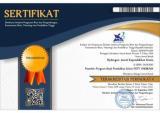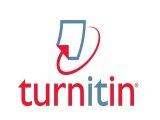APLIKASI PEMBELAJARAN BERBASIS ANDROID PADA MATERI SISTEM PERIODIK UNSUR UNTUK PENINGKATAN PEMAHAMAN KONSEP MAHASISWA
Abstract
This article describe the development result of android base self learning aplication to help students reach conceptual understanding on elements periodic siystem. In form research and development, it was carred out by ADDIE model. Subject of this research is chemisry education students of IKIP Mataram who fulfill Elementary Chemistry I lectur. Based on research it was concluded that : (1) android base mobile learning media application on elements periodic system subject material was produce and operate successly wity adobe air application support. Content and design validity of this product are 81.11 % and 83.97 % successively with very aligible category. Practiotioner and small group trial subject respond are 80.83 % and 89.02 % with very eleigible cathegory; (2) this android base application was enhance students elements periodic system conceptual understanding effectively. It was proved by N-gain average of students conceptual understanding enhancment is 0.82 with high category and t-gain value (6.135) larger than ttable(tα = 0.55; dk= 9 = 2.62).
Keywords
Full Text:
PDFReferences
Abraham,M.R., Grzybowski,E.B. & Renner,J.W. 1992. Understanding and Misunderstanding of Eight Grades of Five Chemistry Concept in Text Book.Journal of Research in Science Teaching.29(12).
Cabanban, C. L.G. 2013.Development of Mobile Learning Using Android Platform.International Journal of Information Technology & Computer Science, Vol. 9 No. 1, pp. June, 2013. Artikel telah disajikan dalam : 3rd International Conference on E-Learning and Knowledge Management Technology (ICEKMT 2013 ) , Bangkok, Thailand on April 6 - 7, 2013 pp. 98 – 106
Calimag, J. N. V. Miguel, P. A. G. Conde, R. S. & Luisa B. Aquino, L. B. 2014. Ubiquitous Learning Environment Using Android Mobile Application. IMPACT: International Journal of Research in Engineering & Technology (IMPACT: IJRET). Vol. 2, Issue 2, Feb 2014, pp. 119-128
Cetingul, P. I. & Geban, O. 2005. Understanding Of Acid Base Concept By Using Conceptual Change Approach. Journal of Education 29: 69-74.
Chandrasegaran, A. L., Treagust D. F. & Mocerino, M. (2007). The Development of aTwo-tier Multiple-Choice Diagnostic Instrument for Evaluating Secondary School Students’ Ability to Describe and Explain Chemical Reactions Using Multiple Levels of Representation. Chemistry Education Research and Practice, 8 (3): 293-307.
Dahar, R.W. 2011. Teori-teori belajar dan pembelajaran. Jakarta: Erlangga.
Glynn, S. M., Tasoobshirazi, G. dan Fowler, S. 2007. Analogies: Explanatory Tools in Web-Based Science Instruction. Educational Technology, 47(5), 45-50.
Hanafi, H. F. & Samsudin, K. 2012. Mobile Learning Environment Sistem (MLES): The Case of Android-based Learning Application on Undergraduates’ Learning. (IJACSA) International Journal of Advanced Computer Science and Applications, Vol.3, No.3, 2012
Ipek, H. & Calik, M. 2008. Combining Different Conceptual Change Methods Within Four-Step Contructivist Teaching Model: A Sample Teaching Of Series And Parallel Circuits. International Journal Of Environmental & Science EducationVol. 3 No. 3 143-153.
Jee, B. D., Uttal, D. H., Gentner, D., Manduca, C., Shipley, T., Tikoff, B., Ormand, C. J. &Sageman, B. 2010. Analogical Thinking In Geosciences Education. Journal Of Geoscience Education p.2-13.
Lee, S. 2012. Creating and Using Databases for Android Application.International Journal of Database Theory and Application, Vol. 5, No. 2, June, 2012
Nakhleh, M. B. 1992. Why some students don’t learn chemistry: Chemical misconceptions. Journal of Chemical Education, 69(3).
Naseriazar, A. Ozmen, H & Badrian, A.2011.Effectiveness of Analogies on Students’ Understanding of Chemical Equilibrium.Western Anatolia Journal of Educational Sciences (WAJES).Vol. 1, No. 1. pp 525-534
Nur, M. 2005. Strategi-strategi Belajar. Surabaya: Universitas Negeri Surabaya Pusat Sains dan Matematika Sekolah.
Orgill, M& Bodner,G. 2004. What Research Tells Us About Using Analogies to Teach Chemistry, Chemistry Education: Research and Practice. Vol. 5, No. 1, pp. 15-32, 2004
Purtadi, S. & Sari, R.L.P. 2012.Analisis Miskonsepsi Konsep Laju Dan KesetimbanganKimia Pada mahasiswa SMA. Makalah Seminar Nasional MIPA.
Sarantopoulos, P. & Tsaparlis, G. 2004. Analogies in Chemistry Teaching as a means of Attainment of Cognitive and Affective objectives: A Longitudinal Study in a Naturalistic Setting, Using Analogies with aStrong Social Content. Chemistry Education: Research and Practice. Vol. 5, No. 1, pp. 33-50, 2004
Ramandha, E. P., Khaeruman, & Khery, Y. 2016. Keterampilan Proses Sains Dan Sikap Ilmiah mahasiswa Dalam Pembelajaran Kimia Melalui Penerapan Context-Rich Problems Berbasis Multimedia Interaktif. Artiikel telah disajikan dalam: Seminar Nasional Pusat Kajian Pendidikan Sains dan Matematika (PKPSM) IKIP Mataram “Assessment of Higher Order Thinking Skills”. Mataram, NTB. Indonesia, 12 Maret 2016
Taber, K. S. 2013. Revisiting The Chemistry Triplet: Drawing Upon the Nature of Chemical Knowledge and The Psychology of Learning to Inform Chemistry Education. Chemistry Education Research and Practice, 14: 156-168.
Thiagarajan,S., Semmel,D.S., & Semmel,M.I. 1974.Instructional Development for Training Teachers of Exceptional Children. Indiana:Indiana University Bloomington.
Yilmazoglu, C. 2004. Effect Of Analogy-Enhanced Instruction Accomponied With Concept Maps On Understanding Of Acid-Base Concept. Tesis.Department of Secondary Science and Mathematics Education.
DOI: https://doi.org/10.33394/hjkk.v5i1.105
Refbacks
- There are currently no refbacks.

This work is licensed under a Creative Commons Attribution-ShareAlike 4.0 International License.





